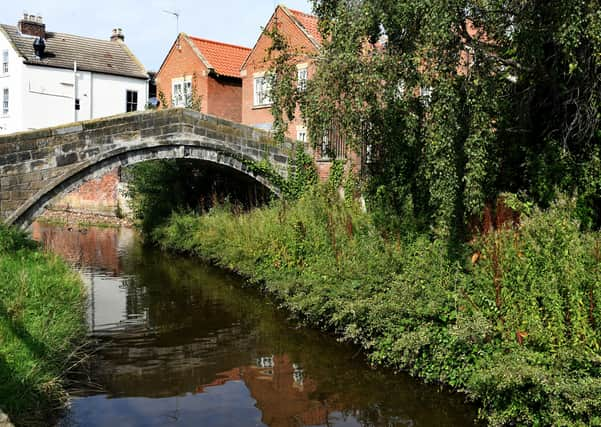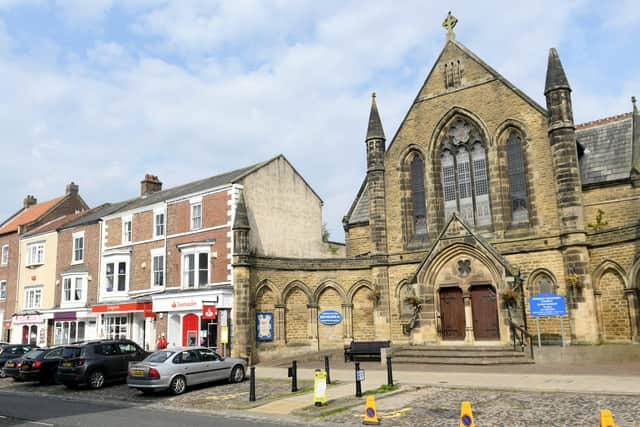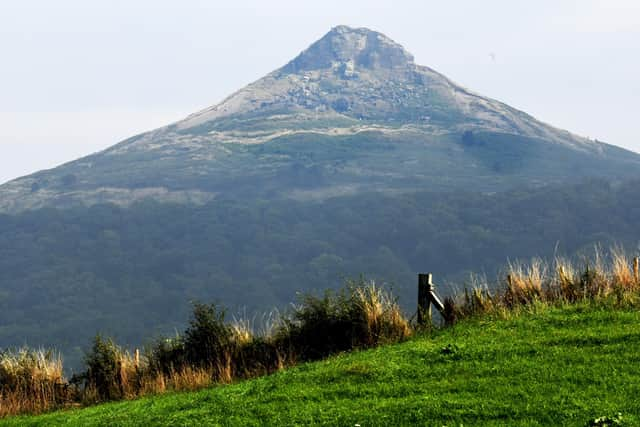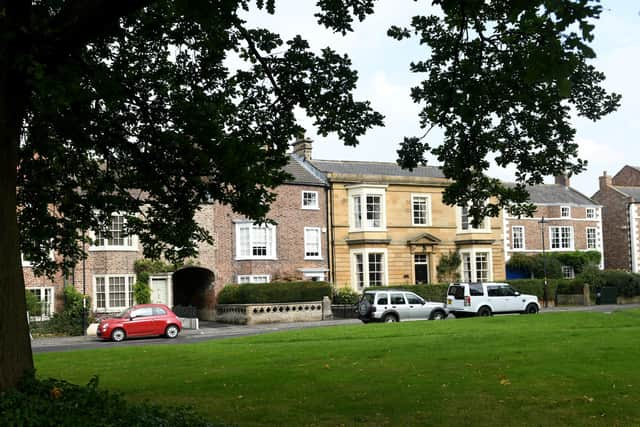The hidden gem that is Stokesley


Many of the names of the becks, gills (and one tiny river, the Tame) are descriptive poetry in themselves – Magpie Gill, Alum, Otter Hills and Lonsdale Becks.
One of the main crossing points of the Leven is at Stokesley, where it flows under a fine old packhorse bridge. These are not uncommon in North Yorkshire (or indeed West Yorkshire for that matter). Packhorse bridges were constructed to allow horses loaded with panniers, or bags, across a river or a stream. The earliest were just slabs of flat rock laid on large boulders, with no parapets on either side but, as they became more sophisticated, they were built of stone or brick.
Advertisement
Hide AdAdvertisement
Hide AdThe beautiful example (technically, it has a “hog back”) at Stokesley is now Grade II listed. It dates from the 17th century and was part of the route between Durham, Helmsley and York. One Victorian picture postcard refers to it as “Taylerson’s Bridge”, but local historians have been unable to find out who the mysterious Mr Taylerson was. There’s evidence of cobbled areas around it, and, once the bridge is crossed, you are right in the middle of the town and the marketplace, where packs would have been unloaded.


That market has been important to the town for centuries, since permission to hold it was granted as far back as 1223, by Henry III, son of the much-reviled King John. Stokesley is mentioned in the Domesday book, but pretty much in passing, since the only remarkable things that the visiting scribes found in 1086 were a mill, a church “and a priest”. That mill may today sound like a very tranquil building in a rural landscape, but it would have once been constantly in use, churning out bags of corn to aid the war effort against the Scots.
Centuries later, one of the visitors to Stokesley would have been young James Cook, for he was born only a few miles away in Marton, and when he was eight, his family moved to Great Ayton, where his father’s employer saw potential in the young lad and paid his fees for the local school.
There’s an intriguing and informative museum about the early life and the achievements of Captain Cook, with some artefacts relevant to his youth, that is only a few miles from Stokesley.
Advertisement
Hide AdAdvertisement
Hide AdWhen James wasn’t at his books, or assisting on Airey Holme farm, he used to like rambling through the lush countryside, and for leisure there was nothing better than to climb nearby Roseberry Topping, enjoying, as one of his biographers put it, “the absolute solitude”. And, to go with that solitude, there was the view over Stokesley, and all the other surrounding villages.


Roseberry Topping (at just over 1,000 feet) is one of Yorkshire’s most distinctive peaks, and it has a glorious half-cone shape, with a cliff to the left, if you are seeing it from the south. What we see today, and what Cook saw on his solitary walks, is rather different, for until 1912, the Topping was in the shape of an old-fashioned sugarloaf, until a geological fault, and the effects of excessive mining both into and under it, caused a collapse.
It appears that its name has Viking roots, and when it first appears in print, the hill is as “Othenesberg”. In Norse, “bjarg” means “rock”, and “Othen” is someone’s name. Over the years, the name went through many variations, and the last of these, “Ouesberry” morphed slowly into “Roseberry”. “Topping”, is a dialect version of “Topp”, the summit of a hill.
The hill was in private hands for many years, but is now managed by the National Trust. It has been a tourist destination in these parts from as early as 1700, when visitors were urged to make the climb to enjoy “the most delightful prospect upon the valleys below to the hills above”. And there’s also a centuries old rhyme associated with the hill, which runs that “When Roseberry Topping wears a cap, let Cleveland then beware a clap”. In other words, if you can’t see the summit for clouds, there are storms on the way.
Advertisement
Hide AdAdvertisement
Hide AdThe town and its surroundings are rich in indications of Bronze Age activity – the ores in the surrounding hills provided the opportunity to make many sophisticated objects, both for domestic life and for protection and combat. The Roseberry Topping hoard is in Sheffield’s City Museum.


For such a small community (around 5,000 folk in all) there are no less than 80 Grade II-listed buildings, and a quartet with Grade II* status. These are largely clustered around the great wide market square (the weekly market is held every Friday) which is known locally as The Plain.
One of the best-loved annual events is the Stokesley Show, run by the Stokesley Agricultural Society, which was founded in 1859 at a meeting in what was then the Golden Lion Hotel. Today, it is the Leven Hotel. Sadly, because of Covid restrictions, this year’s show was cancelled after much soul-searching, but the organisers have promised to return in the autumn of 2022.
One of those fine listed buildings is the parish church, dedicated to St Peter and St Paul, which is part medieval and partly Georgian, with the addition of some striking modern glass. Among other delights inside are carvings by the celebrated Robert “Mouseman” Thompson. Further afield, the area around the town is a walker’s paradise, for both the energetic, and the more leisurely-inclined. One of the favourite excursions is to the Captain Cook Monument, on Easby Moor. But if you prefer just to wander around the town, one of the joys of the place is that it isn’t overwhelmed by chain stores – it has independent shops and businesses galore, and a farmers’ market on the first Saturday of every month.
And that, in these days of identikit and sometimes forlorn-looking high streets, is something of which Stokesley can be proud.
Comment Guidelines
National World encourages reader discussion on our stories. User feedback, insights and back-and-forth exchanges add a rich layer of context to reporting. Please review our Community Guidelines before commenting.